Healthy School Lunch Ideas for Picky Eaters: A Dietitian Mom’s Survival Guide
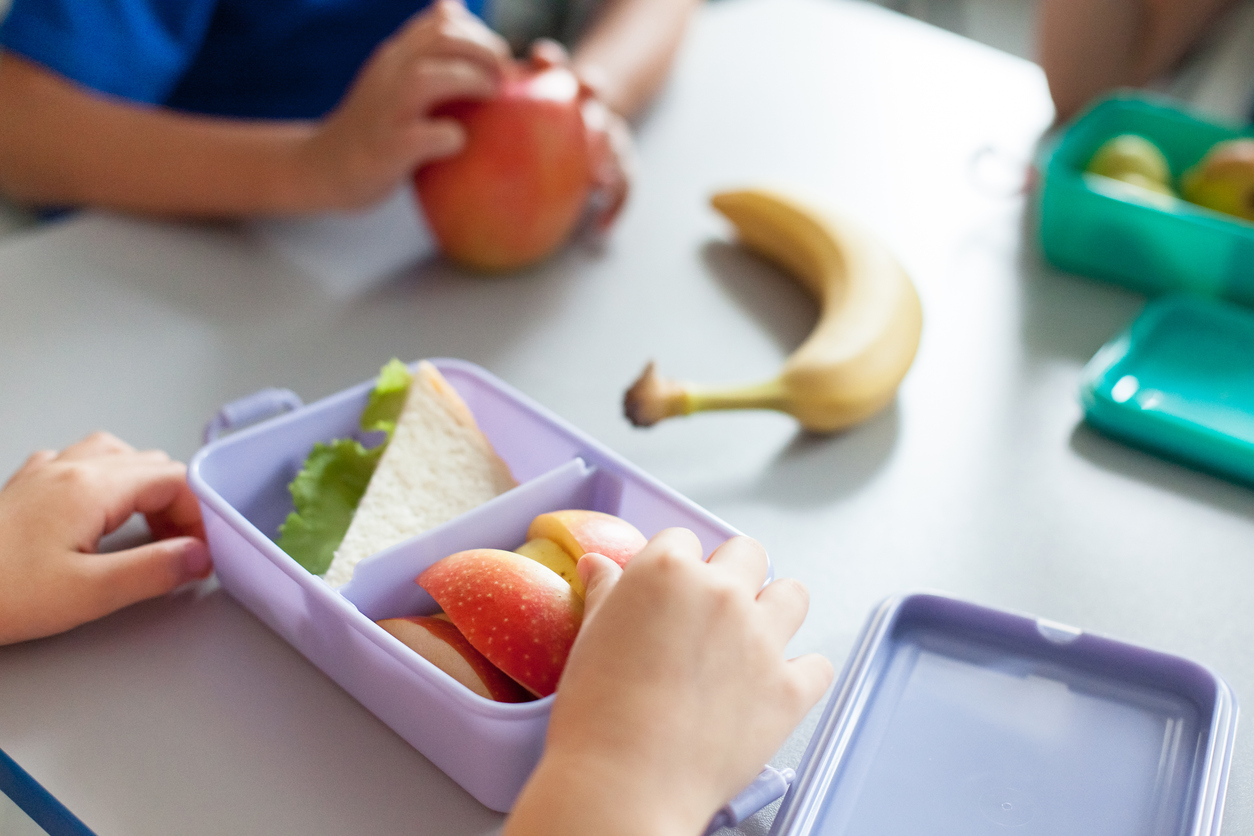
Struggling with school lunch ideas for picky eaters? Get real-life tips, lunchbox combos, and a free printable from a pediatric dietitian and mom of three.
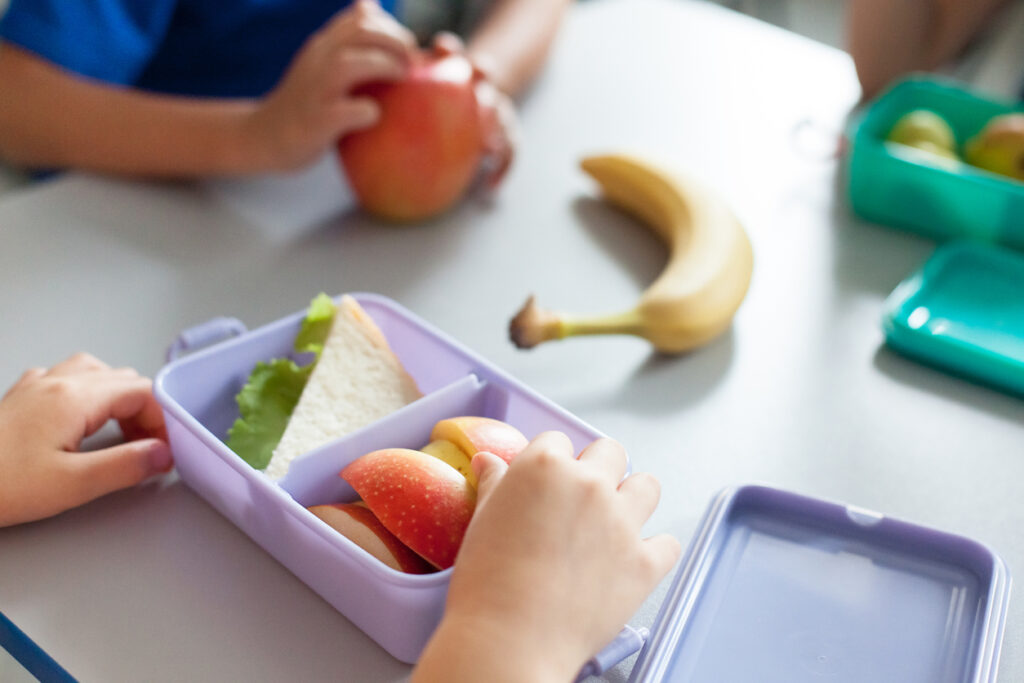
If packing school lunches for your picky eater gives you low-key dread…you’re not alone. As a pediatric dietitian and mom of three, even I feel the back-to-school lunch fatigue creep in. It’s not just about putting food in a container; it’s figuring out what to pack that your kid will actually eat, when to shop and prep, and how to keep things fresh (without resorting to the same three lunches on repeat). Add in a selective eater, avoiding allergens, and a busy schedule full of work, sports and life, and it’s no wonder parents feel tapped out by the second week of September.
Sound familiar? You’re in the right place. In this post, I’m breaking down everything you need to make school lunch less stressful, especially if you’ve got a picky eater on your hands. You’ll find simple tips, realistic strategies, and lunch ideas for picky eaters that are both nourishing and great for school-aged kids and teens.
And if you’re nodding your head already, you’ll definitely want to grab the free printable lunch idea list at the end. Or better yet, come join the waitlist for my Nourished Families Network, where we take the mental load out of meal planning, every single week.

Feeding a family doesn’t have to feel this hard.
Join the waitlist for Sarah Remmer’s Nourished Families Network — a membership for parents who want less stress, more support, and real-life solutions for feeding their families (picky eaters included!).
Why School Lunch Feels So Hard (Especially with a Picky Eater)
Let’s be honest: packing school lunch feels like one more impossible task on an already overflowing list, especially when you’re dealing with a kid (or more) who only wants plain pasta, granola bars and crackers.
The pressure to pack something nourishing and picky-eater-approved is real. We want to nourish our kids, give them energy to learn and grow, and set them up with a positive relationship with food. But we also want them to actually eat the lunch and not bring it home soggy and untouched.
If that sounds familiar, I highly recommend checking out my Ultimate Guide to Picky Eating for a deeper dive into the why behind picky eating — and what really helps.
There’s also the social and logistical side of school lunches. Whether it’s fear of judgment from their peers, not having enough time to sit down and eat, or subtle food shaming from adults, many kids (especially tweens and teens) feel pressure to eat “normal” food … whatever that means. That means lunches that look or smell different, or foods that require assembly or explanation, often get avoided. Teaser: these types of lunches aren’t the ones you want to send.
And let’s not forget the mornings. Getting everyone out the door on time is already a feat. Add lunch-packing into the mix and it’s no surprise that so many parents default to the same three “safe” lunches every week. It’s not a lack of care, it’s burnout. It’s decision fatigue. The mental load of feeding a family day in and day out.
If you’re feeling this, please hear me when I say: you’re not failing. You’re just carrying too much of the mental load.
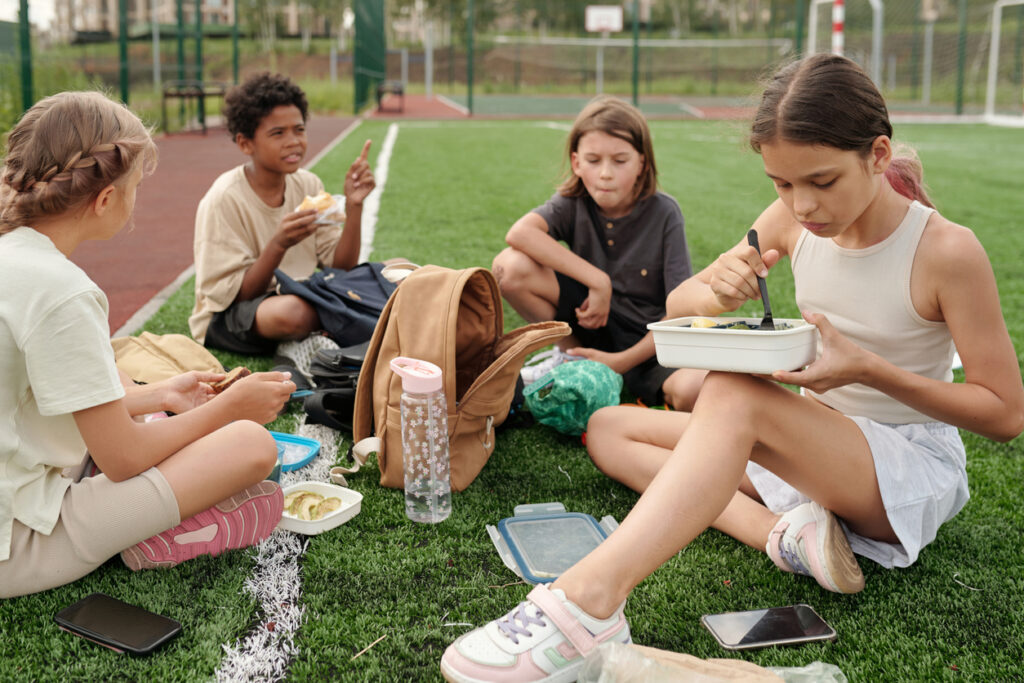
What Picky Eating Looks Like in the School Years
Picky eating doesn’t magically disappear once the toddler years are over. In fact, it can take on new shapes in the school-age and teen years, often in ways that are harder to spot. Older kids may not throw a tantrum at the dinner table anymore, but they might quietly avoid foods, trade away parts of their lunch, or come home with most of it uneaten.
As kids get older, picky eating is often influenced by a combination of sensory sensitivities, growing autonomy, and social awareness. For example, your child might stop eating a previously loved food because of a texture change, a single bad experience, or because it feels embarrassing to eat in front of friends. Some kids narrow their food choices simply because they don’t want to deal with attention, mess, or explanation.
And let’s not forget the role of independence. As they get older, kids gain more control over what they eat, which can be both a good thing and a challenge. They might choose not to eat lunch at all, or skip breakfast, or rely heavily on ultra-processed snack foods that feel safe and predictable.
If your child seems to be eating less variety or becoming more rigid about food as they get older, you’re not imagining it and you’re definitely not alone. The good news is that there’s still so much you can do to support them in building trust, flexibility, and confidence with food without power struggles, guilt, or pressure.
What Picky Eating Actually Looks Like in Real Life
Picky eating can look like:
- A lunchbox that always comes home with the veggies untouched, no matter how many ways you prep them.
- A kid who insists on the exact same lunch every day, and melts down if one element is off.
- Refusal to eat food that’s touched something else, or smells “funny.”
- Eating only beige or crunchy foods, or skipping lunch altogether because nothing feels right.
- Constant requests for packaged snacks, but hesitation around anything homemade.
- Note: Very limited variety that affects growth, energy, or social experiences might be something more than typical picky eating. Learn more about extreme picky eating and when to seek help.
So what can you do?
- Stay neutral. Avoid commenting on how much or what your child eats. Let them know lunch is their opportunity to fuel their bodies and minds, with no shame or pressure.
- Get curious and ask questions: “Tell me more about why your lunch comes home uneaten. I’d love to know how we can make some changes so that you want to eat what’s in your lunch.
- Include at least one “safe” food in every lunch. This helps build trust and increases the chance they’ll eat something which is key.
- Involve them. Ask for their input when planning or packing lunches. Even small choices can boost buy-in and reduce resistance.
- Be patient with exposure. Keep packing a variety of foods (even if they go uneaten). Repeated, low-pressure exposure is one of the most effective strategies for expanding a picky eater’s comfort zone.
- Model flexibility at home. Mealtimes that include variety and calm — without bribes or guilt — help reinforce positive food experiences.
- Take your child grocery shopping with you. That way they can pick a few things that they have wanted to try, or love already, and help pack their lunch.
What Can You do Next?
These steps are just the beginning. Picky eating isn’t a quick fix, it’s about long-term changes and building trust with food. The good news? You don’t have to navigate it alone.
In the Nourished Families Network, I help families just like yours move beyond these basic strategies and create lasting change around food. You’ll get access to more in-depth tools, weekly meal plans, ongoing support, and real-life strategies that make family mealtime a breeze. Join the waitlist today to get started!
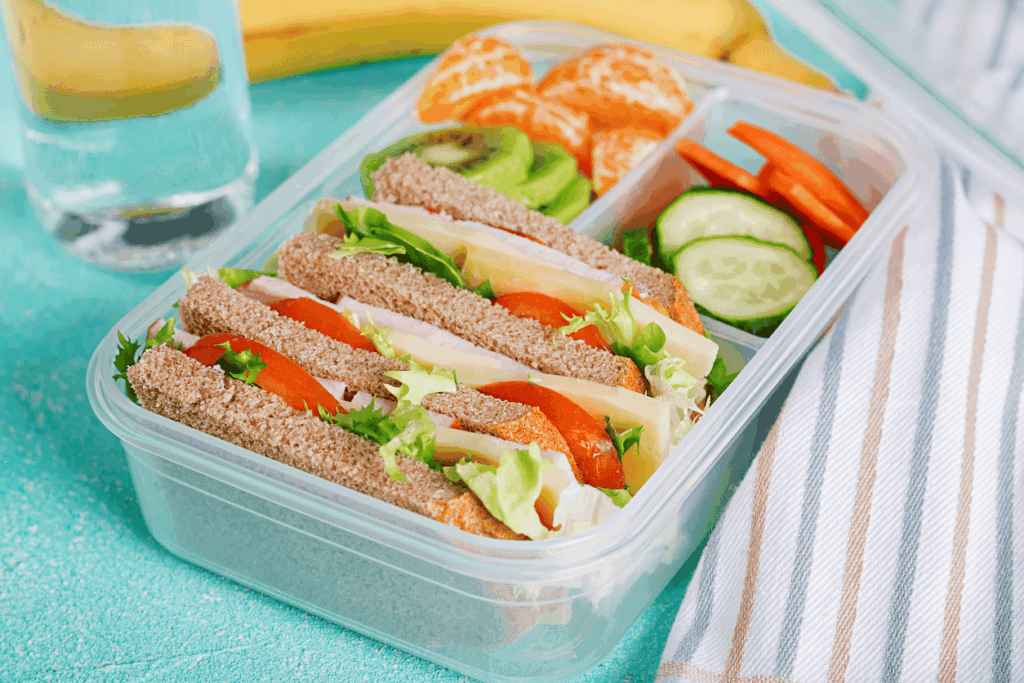
Rethinking What a “Healthy” Lunch Looks Like
Let’s talk about the word healthy, because when it comes to school lunch, many parents feel torn between what’s “nutritionally ideal” and what their kid will actually eat. And I get it. As a dietitian and mom, I’ve been there too, staring down a rainbow-packed bento box only for it to come home barely touched. The WORST. Not only is it wasteful, but it leaves you questioning “what the heck?! This was the best lunch… why did they leave everything?!”
Here’s the truth: a “healthy” lunch isn’t about perfection, presentation, or hitting every food group. It’s about packing something your child will eat, enjoy, and feel good about. And it’s about you not spending hours in the kitchen and losing your mind in the process. That is nourishment, physically and emotionally.
Tips for Packing School Lunches That Work for Picky Eaters
Packing school lunches doesn’t have to be stressful, even if you’ve got a picky eater on your hands. Here are a few simple strategies to make lunch prep easier:
- Include Familiar Foods: Always pack at least one food your child feels comfortable with. This helps reduce stress and makes sure they have something to eat, even if they’re hesitant about trying new foods.
- Use Leftovers that they love: Leftover dinner can be a lifesaver. Think of it as an easy, nutritious lunch that’s already prepared, whether it’s last night’s chicken, pasta, or roasted veggies.
- Add Something Fun: Sometimes a special treat can make the lunch more exciting. A small muffin or a cookie can feel like a treat and make lunchtime a little more fun.
- Ask them HOW they want it packed: Separated in a bento-box (check out these bento box lunch ideas!) or heated up in a thermos… how it’s packed will determine if they actually eat it.
These tips are just the start. Inside the Nourished Families Network I offer all the lunchbox solutions you could ask for, including:
- Simple frameworks, like my Rule of 4, to ensure your child’s lunch has enough variety, is nutritious, and something they’ll actually want to eat.
- Easy-to-follow systems that take the guesswork out of meal planning, helping you feel organized and prepared every week.
- Stress-free strategies for dealing with picky eating and creating a positive relationship with food.
Ready to make mealtime easier? Join the waitlist today and get exclusive access to tools, tips, and ongoing support that make feeding your picky eater a whole lot easier.
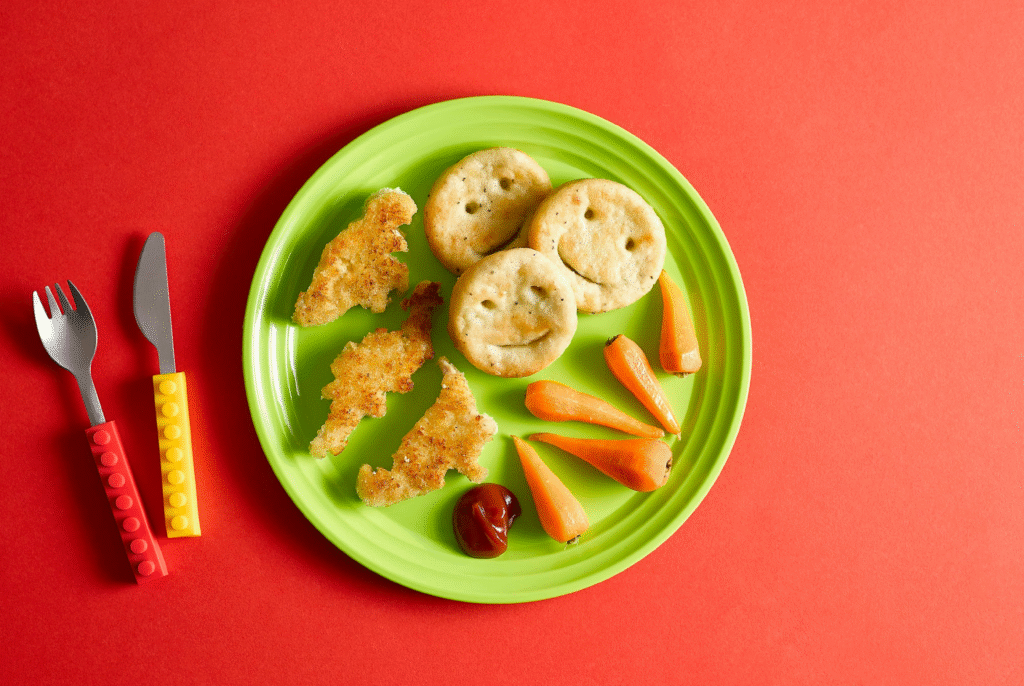
And what about processed, packaged snacks?
Let’s not forget one of the biggest sources of stress for many parents: processed, packaged foods for kids. Are they healthy? Are they bad? Should I avoid them?
Here’s my take: Packaged snacks can absolutely be part of a nourishing and kid-loved lunchbox. In fact, they often help make lunch more realistic, more satisfying, and more likely to be eaten, especially when kids are craving something familiar or comforting (ahem… our picky eaters).
There is no need to fear processed or packaged foods. In fact, most of the foods we eat, even homemade, are processed in some way (think: yogurt, pasta, cheese, canned beans). What matters most is that our kids are exposed to a variety of foods, processed included.
So yes, that store-bought granola bar, fruit cup, or package of crackers? Those can 100% have a place in your child’s lunchbox. When combined with the other elements of the Rule of 4, they offer convenience, pleasure, and practicality, all important parts of feeding kids, especially those who are selective.
6 Real-Life Tips for Packing Lunches Picky Eaters Will Actually Eat
Let’s take the pressure off for a second. School lunch doesn’t need to be perfect — it just needs to be possible. And when you’ve got a picky eater in the mix, “possible” can feel like a stretch. If that sounds familiar, you might also find these 7 ways to get your child to eat their school lunch helpful.
1. Get curious — and ask questions
Sometimes what looks like “picky eating” is really something else entirely. Your child might not be avoiding a food because they dislike it! It could be that the container is hard to open, the texture changed with temperature, or other kids laughed when they pulled it out. Before assuming it’s about the food itself, get curious. Ask questions like the following with genuine, pressure-free interest:
- “Was anything tricky about lunch today?”
- “Was there anything you didn’t feel like eating?”
When kids feel safe to share, you’ll often uncover reasons that are totally fixable and build more trust along the way.
2. Include at least one safe food (and don’t overthink it)
If your child is really attached to a certain food, like crackers, cheese, or apples, that’s okay! Having one or two familiar foods in the lunchbox can help reduce resistance and ensure they have something they’ll actually eat, even if they’re hesitant to try new foods.
3. Don’t treat lunch like a nutrition test
Lunch is just one part of your child’s eating day. If they skip their veggies or miss out on protein, that’s not the end of the world. It’s the overall pattern of eating that matters, so let go of the pressure to make every meal “perfect.” It’s all about consistency and balance over time.
4. Involve your child in planning or packing
Even small moments of involvement, like letting your child choose between two snack options or help pack leftovers, can make them feel more in control and reduce power struggles. This is especially helpful for picky eaters who thrive on a sense of autonomy.
5. Avoid bribes, pressure, or guilt
The “eat this, and then you can have that” approach often backfires. It creates stress around food and can lead to further resistance. Instead, pack the treat with the meal and let your child decide what to eat and when, without any conditions attached.
6. Normalize repetition and introduce new foods gently
It’s perfectly fine to repeat lunches your child loves. Familiar foods provide comfort and reassurance, which can help reduce anxiety around meals. Keep introducing new foods slowly, and remember that a little exposure here and there is enough to help expand their food preferences over time.
The strategies I’ve shared here are just a few simple ways to make lunch packing less stressful, but there’s so much more to explore when it comes to picky eating and making mealtimes easier. Inside the Nourished Families Network, I offer even more practical solutions and ongoing support to help you feel confident every day, so you’re never starting from scratch.
5 School Lunch Ideas for Picky Eaters
Need some inspo?! Here are some idea starters for packing school lunches that will appeal to picky eaters. BUT if you want 20 easy lunchbox ideas to get you started, make sure to download my new School Lunch Freebie here!
1. Deconstructed Sandwich Box
Not all kids like sandwiches (or soggy bread – fair enough!). Try offering the components separately instead:
- Whole-grain crackers or mini pitas
- Rolled-up turkey or ham slices, cheese cubes, or hummus
- Cucumber slices or baby tomatoes
- A small cookie or fruit gummies
Bonus: This feels like a “build-your-own” lunch, which gives kids more control (something picky eaters often crave).
2. Snacky Lunch
Snacky lunches are especially great for kids who like variety or feel overwhelmed by large portions. When in doubt, go for a snack-style lunch that checks all the boxes:
- Hard-boiled egg or cheese stick (protein)
- Whole grain pretzels or granola bar (carb)
- Apple slices with sunflower seed butter or yogurt dip (fruit + dip)
- Mini muffin or chocolate brownie (“just because”)
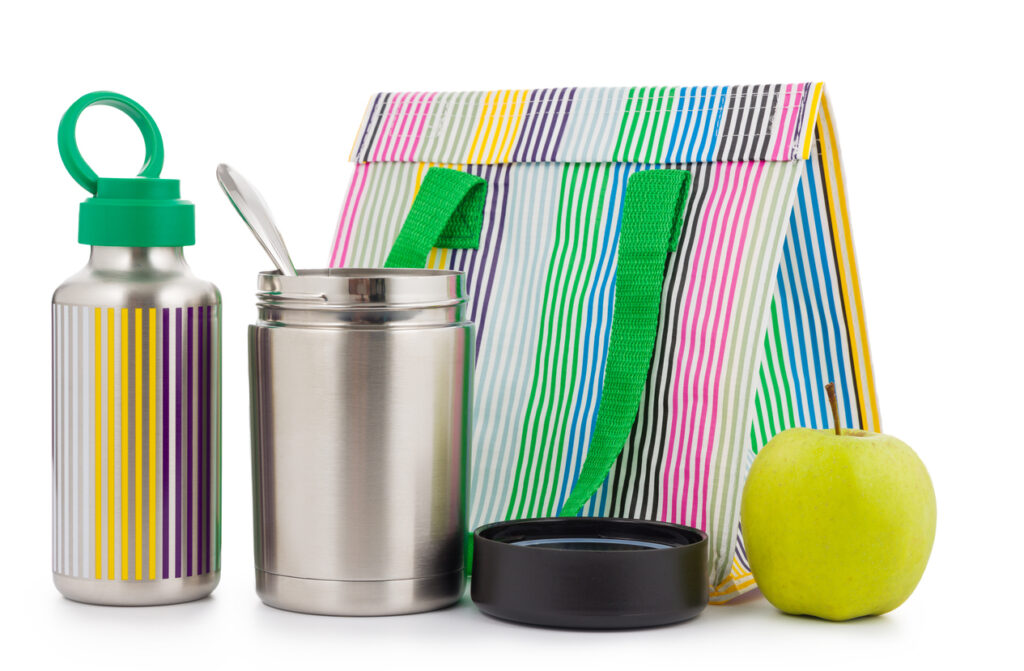
3. Warm Thermos Meal
Warm lunches are often a big hit. Sometimes a cozy, familiar hot meal is just the thing:
- Warm mac & cheese (homemade or store-bought – both are great!) + leftover chicken
- Carrot sticks or sugar snap peas on the side
- Applesauce pouch or orange slices
- A small brownie or treat
Tip: Warm up the thermos with hot water before adding the food to keep it hot longer.
4. “Same but Different” Bento Box
Perfect for picky eaters who thrive on routine, but are ready for gentle new exposures:
- 3–4 familiar and safe foods (like crackers, cheese, deli meat, grapes, sliced cucumbers)
- 1 new or less familiar food in a small portion (like mango, edamame, or roasted chickpeas)
- Homemade cookie
The goal here isn’t to force the new food — it’s just to include it. Over time, repeated exposure (with zero pressure) helps expand food acceptance.
5. Breakfast-for-Lunch Box
Breakfast foods are often a big hit with picky eaters. They’re familiar, comforting, and easy to eat. Why not pack them for lunch?
- Mini pancakes, French toast strips or waffles (bonus if they’re homemade and frozen for easy prep!)
- Greek yogurt, or cheese (protein)
- Sliced strawberries or banana
- A sprinkle of chocolate chips or small maple syrup dipper for fun
This combo is balanced, customizable, and feels like a treat, which means it’s more likely to be eaten. Plus, who doesn’t love breakfast all day?
Final Thoughts
If you’re feeling the pressure of school lunches, I hope this post has reminded you that you’re not alone and you’re not doing it wrong. Feeding kids (especially picky ones) is hard, and there’s no one-size-fits-all formula. But with a few simple shifts, like the Rule of 4, some go-to lunch combos, and a sprinkle of curiosity, things can feel so much more manageable.
Bonus Free Download: 20 School Lunch Ideas for Picky Eaters
Need a little inspiration to get started? Grab my free printable: 20 kid-approved lunchbox ideas that are nourishing, realistic, and picky-eater-friendly. Print it. Stick it on your fridge. Use it to take the guesswork out of lunch packing!
And if you want even more support, recipes, snack lists, and stress-free strategies for feeding your family — including weekly menu plans — come join the waitlist for the Nourished Families Network. It’s your one-stop hub for feeding kids with more ease (and way less stress), picky eaters and all.
This post may contain affiliate links. View our policy.







